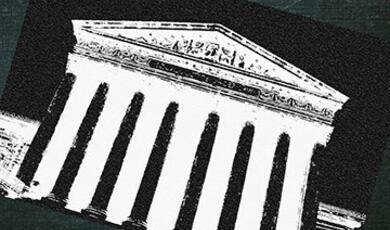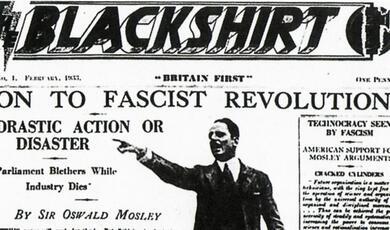Twentieth-Century Divas: Barbra Streisand
Share
- Details
- Text
- Audio
- Downloads
- Extra Reading
Since her debut in Funny Girl, her bold vision and uncompromising control of her entire artistic output have made Barbra Streisand highly successful – and sometimes sparked controversy. Despite her popularity and numerous awards, she has been stigmatised in the entertainment industry as a ‘diva’. Streisand’s work as a producer and director have shattered the glass ceiling and reshaped our idea of what a diva is today, but not without personal cost.
Download Text
Twentieth-Century Divas: Barbra Streisand
Professor Dominic Broomfield-McHugh
26 October 2023
Thinking about Divas
In her speech at the Last Night of the Proms 2023, the conductor Marin Alsop reminded the audience that ‘The most recent UN report puts gender parity a staggering 134 years away.’ As the first woman to conduct the fabled Last Night (a feat for which she has entered the Guinness Book of Records), Alsop knows only too well how the professional experiences of women are limited and mediated by gender, and how often women in power are critiqued and undermined for seeking that power before they even do anything. In the case of women conducting orchestras, there is also the dilemma of whether using the kinds of gestures that men typically use when conducting will have the same effect and what the audience’s response will be, something that Alsop describes vividly in her 2021 documentary The Conductor. She talks about the time when her mentor Leonard Bernstein attended one of her concerts, came back afterwards, and said: ‘You know, I just don’t get it, I don’t understand. When I close my eyes, I can’t tell you’re a woman.’ It’s clear that when women take on roles historically taken by men, they face all kinds of barriers, and that it doesn’t stop just because they get an opportunity: the experience itself is rendered more stressful because of preconceptions around gender.
This series of lectures on what I’m calling ‘twentieth-century divas’ considers the careers of three women in a field in which women have in fact been quite well represented, i.e., popular music on record, stage and screen. All three of them—Shirley Bassey, Julie Andrews, and Barbra Streisand—became internationally popular during the 1960s, the period associated with second-wave feminism, a time when women fought for and won some more rights. Yet as they exerted their power and influence, becoming commercially successful and culturally iconic, each of these singers also became more criticised, with a particular focus on the relationship between their power and their femininity. And I suggest that this was not just because they were popular and successful—after all, plenty of men also become more criticised as they become more successful—but because women in power have historically been treated as a threat in quite a particular way.
The word ‘diva’, which literally means ‘goddess’, neatly expresses the bifurcation that successful women in performance often experience. On the one hand, the word is empowering: it connotes a superstar, a queen, an idol, someone of outstanding talent, perhaps a maverick, and certainly someone successful. On the other hand, it is often used pejoratively: it tells us of someone difficult, self-important and demanding, a bossy prima donna of temperamental dimensions. Whether empowering or disempowering, the word ‘diva’ certainly foregrounds power, which is why these lectures are focused on the topic of music, women and power, and do not just treat singing as a neutral act.
Although the wider history of the word is not my main concern here, we should acknowledge that the use of the word ‘diva’ in the context of women and performance goes back several centuries. I think in particular of Georg Frederic Handel’s ‘rival queens’, the Italian opera singers Francesca Cuzzoni and Faustina Bordoni, whose performances in London in the 1720s led to rival fanbases and in 1727 inspired a minor riot at a performance down the road from Gresham at Lincoln’s Inn Fields Theatre (a building later absorbed into the Royal College of Surgeons). Rumours spread that the rival singers had started to pull at each other’s hair and attacked each other during the performance, thus encouraging the general chaos in the audience; but more recent scholarship tends to agree that this is a fabrication, and that they performed together quite happily on subsequent occasions (it was the fans who were rioting). Yet the gossipy pamphlets that were circulated at the time led to their being caricatured for posterity in John Gay’s The Beggar’s Opera as Polly Peachum and Lucy Lockit: a good example of how the truth can be forever distorted when the stories of powerful women are told for the ages.
Streisand as a Diva: Jewish identity and experience
Although eighteenth-century opera may seem remote to Broadway, all of this serves as an introduction to thinking about today’s subject, Barbra Streisand, as a diva, because it shows that many of the things with which she has contended are actually part of a long-established gendered model. Yet there are other dynamics at play, too. Earlier in 2023, Streisand was presented with the Justice Ruth Bader Ginsburg Women of Leadership Award, a prize which is presented annually to women who have distinguished themselves by assuming a leadership role and making a meaningful change in the lives of others. (In 2021, it was awarded to Queen Elizabeth II, which speaks to the profile of the award.)
The press release proclaimed Streisand’s achievements, drawing attention in particular to her roles as producer, director, writer, and actress all on the same film (i.e. Yentl from 1983) and her achievement as the first woman to win an Academy Award as composer. In response, Streisand posted a ten-minute video online in which she gave a speech about how the experiences of Justice Ginsburg during her professional rise reflected some of Streisand’s own experiences in a very different field. Streisand talks in particular about how Ginsburg frequently highlighted her struggles against anti-Semitism during her career, and Streisand herself tells a story about how, as a young singer, she was told by one record company executive for whom she had auditioned that she ‘had a nice voice’ but was ‘too ethnic’. ‘I knew what they meant’, she says.
Clearly, the nameless executive couldn’t see colossal commercial potential. To date, Streisand has released 117 singles, 36 studio albums, 11 compilations, 11 live albums and 15 soundtracks, with another compilation album and a new version of the soundtrack of Yentl both due to be released tomorrow (27 October 2023). Whether one likes her or not, there is no arguing with the fact that Streisand has sold well over 150 million albums in her career; she has achieved 52 gold and 31 platinum albums, second only to Elvis Presley. She’s the second best-selling female album artist in the United States (after Taylor Swift), and the only artist to have achieved a no. 1 album in each of the last six decades.
As for being ‘too ethnic’, one of the key dimensions of Streisand’s divadom is her strong sense of self-actualisation, i.e. her assertion of who she is. Thus in both of the Broadway roles in which she launched her career, she played explicitly Jewish characters rather than trying to hide or distract from her ethnicity. For her, it was empowering, because it became part of her iconic image. In Harold Rome’s I Can Get it for You Wholesale, she played the long-suffering secretary Miss Marmelstein, and in her song of the same name she drew attention to her name, Yetta Tessye Marmelstein, and even explained how to spell it. In her more famous appearance in Funny Girl, too, repeated reference is also made to her character of Fanny Brice being Jewish. Indeed, in taking on this role, she was underlining her artistic lineage with one of the leading Jewish performers of a previous generation. This is increased in the film version of Funny Girl, for which some of the specially written songs from the stage show were replaced by numbers performed by the real-life Brice, in particular her signature tune ‘My Man’, which memorably closes the movie.
This strand of Streisand’s career came to a climax in 1983 with the release of her film Yentl, which she worked on for over a decade against considerable adversity. The film recounts the tale of a young Jewish woman in Poland who disguises herself as a man in order to get an education after the death of her father. Streisand’s own father was an intellectual who died when the singer was still a baby, and it’s clear why the storyline of Yentl appealed to her. The semi-autobiographical element was underlined in the score by composer Michel Legrand and lyricists Marilyn and Alan Bergman, in particular the song ‘Papa, Can You Hear Me?’ Streisand won the Golden Globe for Best Director for the film in 1984, the first woman to do so; it took until 2021 for another woman to win the award.
Streisand has often spoken about her decision not to have work done on her nose despite pressure to modify her appearance to look less Jewish, and in many of her public appearances she has actively drawn attention to her nose; in her 1994 tour, she asked Stephen Sondheim to change the lyrics to his song ‘I’m Still Here’, proclaiming in one line, ‘I kept my nose to spite my face’. In short, one of the key ways in which Streisand has exerted her power to achieve diva status is by proudly embracing her Jewishness both in and beyond her work. It’s clear that foregrounding that element of herself has been artistically productive for her.
Collaboration
As I noted earlier, the word ‘diva’ is often used to describe someone self-important and difficult, but the evidence of Streisand’s career is that she loves to work with other people in order to achieve her professional goals. True, having control over her work is important to her too, surely quite reasonably, and this is not something that would normally be criticised in a man. But even this control is achieved through collaboration: she has been with the same agent, Martin Erlichman, for over sixty years now, favouring him because from the very beginning he negotiated that she would be able to make her own choices, from song lists to costumes. The reason for this, I believe, is because she recognised that being unique or unusual was going to be the key to her stardom, yet in the realm of popular culture, performers are often pressurised to conform to the latest trends, something Streisand has not particularly done.
But she couldn’t achieve success without working with other people, and the single most striking source I’ve found in preparation for this lecture reveals the collaborative dynamics behind the scenes of Funny Girl, her first and only starring role in a Broadway musical, in 1964. The papers of Bob Merrill, the lyricist of Funny Girl, are at the Library of Congress, and they include a series of typed lyric sheets on which Merrill made notes during rehearsals and early previews of the show. On each of them, there is a sense that here was the most exciting young talent with whom the distinguished creative team had worked in years, and they wanted her to succeed. The devil was in the details, and Merrill’s meticulous comments identify areas in which the songs could be improved to support the strongest possible presentation of Streisand’s performance.
For example, on the lyrics of the famous ‘Don’t Rain on My Parade’, we see an unfamiliar verse for the song, which Merrill has marked ‘key low’ and then ‘out?’, noting that ‘Barbra runs out of gas’. This was not a criticism: the refrain of the song is hugely demanding, and Merrill proposed to drop the verse so that she had more stamina left to thrive in the refrain. It became one of the signature songs of her career, and its success was the result of a level of refinement created through collaboration with the people around her. The same goes for the other songs: on the reprise of ‘Don’t Rain on My Parade’ at the end of the show, Merrill notes twice that the key is too low and needs to be raised to suit her vocal range. For the satirical song ‘His Love Makes Me Beautiful’, Merrill notes that Streisand needs to avoid turning upstage because the audience can’t see her, and also encourages her not to ‘try too hard’ because the costume will help her to get the laughs. Again, these are helpful refinements to help show her off at her best rather than criticisms. And for her hit ballad ‘People’, Merrill again notes her inclination to turn upstage, something that would disconnect her from the audience.
Why does all this matter? Because no musical performer can possibly achieve high standards without support and advice, yet divas in general, and Streisand in particular, have been critiqued for being lone figures who are unwilling to work with others. Yet if anything, Streisand has gone out of her way to create collaborations, whether with her regular team—e.g. her manager Erlichman, her collaborators Richard Jay-Alexander and Jay Landers, her arrangers and conductors William Ross, Marvin Hamlisch and Peter Matz—or with songwriters.
In 1985, she returned to her home repertoire and recorded The Broadway Album, in which she sings a range of musical theatre standards. When she came to record ‘Send in the Clowns’ from A Little Night Music, she asked the songwriter Stephen Sondheim whether he would be willing to revisit the material and expand it for her album; specifically, she wanted to address the fact that a piece of dialogue in the middle of the song needed to be omitted from the recording and she wanted something to replace it. On one level, it seems like an audacious move: asking probably Broadway’s most revered composer to rewrite perhaps his most successful song. But in a documentary on the making of the album, and in several interviews since, Streisand has explained both why she felt the need for an expansion of the material (she wanted to return to the bridge of the song, because she loved it) and also why Sondheim was willing to do it: ‘I asked him how he would feel about writing a new lyric. And what is so extraordinary about him is that he said he would try, that he believes as I do that art is a very living process’.
In print, Sondheim specifically comments on how he felt about this request: ‘One of those fine singers who recorded [Send in the Clowns] was Barbra Streisand, a performer who examines the lyrics she sings very carefully, and who questioned the dramatic connection between the two choruses…Without Fredrik’s apology and departure in between, there is indeed an emotional gap, so when [Streisand] asked me to write something that would accomplish the transition, it seemed a logical request rather than the whim of a diva.’ Here we can see, then, that although Streisand is exerting her power as a diva, she’s also doing so respectfully and collaboratively, because she knows the results will be better; and indeed Sondheim is keen to defend her from any pejorative labelling as a diva because of the request to rewrite his hit song just for her.
Lastly, we should observe her embrace of another form of collaboration too: the duet. One of the performances that first solidified her national reputation was in 1963 with Judy Garland on The Judy Garland Show. Streisand appeared in a duet with the legendary MGM star, with whom she sang a special arrangement of ‘Get Happy/Happy Days Are Here Again’, and also sang briefly with Garland and Broadway veteran Ethel Merman, a trio that placed her in the lineage of great musical belters (a topic they even discuss in the dialogue leading up to the song). Working in her early twenties with more established stars was a clear boost to her reputation. Subsequently, duets have proved a route to reviving her commercial success. In 1978 and 1979 she recorded hit singles with Neil Diamond and Donna Summer, contemporary stars from different subgenres of popular music, and in both cases those collaborations led to no. 1 singles. In 1996, she co-wrote and recorded a duet with Bryan Adams for her film The Mirror Has Two Faces (which she directed and starred in) and it became her first top ten hit single since 1981. And more recently two duets albums released in 2014 and 2016 proved her commercial clout once again, when both went to no. 1. It’s not rocket science, of course: if two or more popular artists record together, they bring two audiences and therefore have more potential for higher sales. But the point here is that Streisand has apparently enjoyed working with other singers enough to record several dozen duets over her career, thus showing again that the classic image of the diva who only wants to do work that’s only about them as an individual is perhaps unwarranted.
Streisand and Divadom
Although her name appears at or near the top of any list of contemporary divas, it’s only right to acknowledge that Streisand herself sometimes seems irritated by the tag. In an interview on The Tonight Show with Jimmy Fallon, she discussed the topic directly, appearing to reject the label ‘diva’ for two reasons: 1) she’s not an opera singer and 2) she dislikes its pejoratively gendered use (‘Why does nobody call a man a diva?’ she asks). Let’s take each of these in turn, because I believe that while her ambivalence towards the word is understandable, she has in fact consciously constructed aspects of the diva persona through her performances. She might reject it in interview but she invites it in performance.
Streisand is not, of course, an opera singer, and even her perfectly respectable album of classical music, called Classical Barbra, proves that she comes from a different musical world. But she is a soprano, and while she mainly avoids singing in head voice (which is the principal sound we associate with an operatic soprano), her ability to sing in that register perhaps explains her ability to float her voice in her many ballads (e.g. ‘The Way We Were’). In the lecture I will show how this ability to sing in the soprano head voice has always been hiding in plain sight, because in her early career especially, she would use that sound for comic effect (e.g. in a few notes in ‘His Love Makes Me Beautiful’ in Funny Girl, in the verse of ‘So Long, Dearie’ from Hello, Dolly!, and in an impressive mock operatic number from her television special The Belle of 14th Street). She’s no Maria Callas—and doesn’t want to be—but these moments reveal the tantalising potential of her voice: for much of her career she could go much further and higher than she chose to—a soprano in hiding, so to speak. What could be more diva-ish?
Then, too, the way her performances have been presented have frequently invoked exactly the kind of grandeur that we associate with the diva. In the lecture itself I will provide an example of how this has been consistently constructed throughout her career: namely, in climactic notes in her musical films, where she belts a high note for a long time and the camera zooms out, amplifying her musical performance by giving the impression that the whole universe is temporarily emanating from her voice. We see this in songs from Funny Girl, On a Clear Day, Hello, Dolly! and Yentl, all four of which are directed by different people (Yentl by Streisand herself) but use the same visual strategy to similar effect. It evokes the operatic soprano in the concert hall: a small body standing on the stage, reaching the whole audience with the power of their voice. Given Streisand’s unprecedented control of her work, it’s clear that she’s at least partly responsible for representing power through her performances in this way. This visual framing also matches her clever use of the microphone throughout her career: her sensitivity and thoughtfulness in the recording studio compensates for the fact that her voice is not particularly large or loud, even though it is powerful in other senses.
The voice: Power and Longevity
One of the ingredients of Streisand’s success is her ability to tell a story, often in an introverted and softly floating performance. Yet the power of her vocal resources, and the longevity of that power, is the voice-related reason why she’s a diva. Streisand has kept working successfully over an impressive stretch of time: she released number 1 albums in both 1964 and 2016 (and several times in between, of course), a record-breaking 52-year stretch that proves she could still deliver the goods well into her seventies (which, incidentally, is much longer than most operatic sopranos).
Perhaps it helped that she didn’t perform too often. She gave no public concerts between 1967 and 1994, a 27-year stretch explained by stage fright caused by memory lapses in the 1967 concert, which was delivered to over 135,000 people in New York’s Central Park. When she did return, it tended to be at roughly six-year stretches—in 1994, 2000, 2006 and 2012, plus a few concerts subsequently—and maybe focusing on recordings and making films meant she could preserve her energy and avoid the wear and tear that many other singers experience.
On the other hand, from her interviews it’s clear that not only does she not really enjoy performing live, but she also has a fairly limited understanding of, and interest in, the mechanics of the voice. She has tended to invest in spontaneity and has believed that the sounds will come out. If anything, while her vocal power inevitably diminished a little bit over time, the increased finesse makes some of her later performances more exciting and satisfying. In the lecture itself, I’ll compare a passage of the song ‘He Touched Me’ from two different performances, in 1967 and 1994, and show how, even though she does sing the song in a slightly lower key later in her career, the preservation of her voice is at the heart of why she’s such a high-ranking diva: that’s where the power lies.
In the 1967 performance, she seems to want to get through the climax of the song more quickly and uses what’s called a ‘growl’ to give the moment energy, but it seems a little too aggressive a gesture for what she’s singing about at that moment (the sudden feeling of falling in love); in 1994, the warmth and energy of the belt on the same word (‘suddenly’) is much more effective. I’ll also compare performances of the end of one of her signature tunes, ‘Don’t Rain on My Parade’, from 1994 and 2006, and will show how the latter performance, delivered at the age of 64, finds her still in great voice as well as delivering a diva-ish coup de theatre as she disappears through the floor while belting the final note. The constructed use of the staging indicates that she knows that what she’s doing is exciting, and presents her work visually in a way that amplifies its power.
Politics, Philanthropy, and Legacy
The final dimension of Streisand’s career as a diva that merits examination is her active participation in politics, and her generous philanthropy. She has been a staunch Democrat for a long time, fundraising for both the Clintons, Obama, and Biden, and answering the call from the DNC on other occasions too. Nor does she just raise money: on various occasions she has written open letters to the Democrats to try to galvanise them into action. In April 2001, for example, she wrote a three-page memo entitled ‘Nice Guys Finish Last or Where Do We Go From Here: A Case for the Democrats,’ in which she asked: ‘What has happened to the Democrats since the November election? Some of you seem paralysed, demoralised and depressed.’ She called for a ‘strong, strategic, targeted offense against the Republican revolution’ – blunt words from a mere pop singer.
Streisand is not the only popular artist to hold strong political views, but her assertive participation and dialogue—again, whether one agrees with her or not—is another aspect of why she is a powerful figure, and for me, clinches her diva status. Unusually, this is something she has frequently brought into her live concert appearances, sometimes getting her into trouble when the audience wasn’t fully sympathetic to her views.
Her ruthless declaration of her political views has totally ignored whether they are welcomed or not: in the first concert of her 2006 tour she even brought on stage an impersonator of George W. Bush whom she proceeded to ‘interview’. (The New York Times relayed one of the exchanges thus: ‘How would the president erase the national debt? Sell Canada; they don’t use half of it, he replied.’). She was heckled, even though she was in her left-leaning hometown of New York, and then swore at the heckler; she may have gone too far but she insisted on being heard. Later in her 2006 tour she toned it down, but still told a political joke in explanation of how she hates being the subject of ridiculous rumours: ‘This is a good one,’ Streisand said: ‘“She walked into a room full of musicians and fired everyone on the left.” Now, anyone who knows anything about me knows if I were ever to fire people, which is crazy, it would be everyone on the right!’.
She has also given serious talks on leadership and politics. At Harvard University in 1995, she gave a speech entitled ‘The Artist as Citizen’, petitioning for the importance of funding for the arts which at that point, as almost always, was facing cuts in America. She said:
‘Most artists turn up on the humanist, compassionate side of public debate, because this is consistent with the work we do. The basic task of the artist is to explore the human condition. In order to do what we do well, the writer, the director, the actor has to inhabit other people’s psyches, understand other people’s problems. We have to walk in other people’s shoes and live in other people’s skins. This does tend to make us more sympathetic to politics that are more tolerant. In our work, in our preparation, and in our research, we are continuously trying to educate ourselves. And with learning comes compassion. Education is the enemy of bigotry and hate. It’s hard to hate someone you truly understand.’
She has also tried to put her money where her mouth is. Again, one may not agree with her views, but she has given over $25 million to over 800 organisations through her Streisand Foundation, including nearly $16 million from her 2007 tour alone, donating money to environmental causes, education and women’s health. In June 2012, she staged a huge fundraiser at her own home in Malibu, California, raising over $20 million for research into women’s heart disease, half of it donated by herself through matched funding. ‘I can’t stand inequality of any form,’ she told Hollywood Reporter, ‘whether it’s about civil rights issues, women, gays — whatever. Gender inequality really gets me.” Much earlier, in 1986, she gave a concert at her home to a gathering of celebrities, not only raising millions for her Foundation through record and DVD sales of the concert, but also boldly drawing attention to the impacts of climate change: ‘We’re being reckless with the whole miraculous balance of nature,’ she said, ‘but I have great faith in people. I believe that if they’re told, if they understand what’s at stake, they will make a change.’ The first payments from her Foundation were to the Environmental Protection Agency, and she has remained active in verbally and financially supporting work related to climate change.
What then will be Streisand’s legacy? The great classical pianist Glenn Gould waxed lyrical about her interpretative abilities, declaring that when she performs ‘no phrase is left solely to its own devices’ and that her voice is ‘one of the natural wonders of the age’. She has had many admirers, and also many detractors. She talks in interviews about a desire to establish the truth, and in 1977 she gave an extensive interview with Playboy magazine, promising to ‘answer back’. Almost forty years later, she gave a major interview with the New York Times, the article titled ‘Barbra Streisand Sets the Record Straight’. The imagery showed her in serious and reflective mood, and the subtitle explained ‘the megastar is intent on correcting (the tiniest) errors and on defining her own legacy.’ Ironically, just four days later the Times had to issue a correction, putting the record straight on four facts in the article itself; she is perennially burdened not only with gossip but also with inaccuracies, even when working with the most well-intentioned reporters.
For Streisand, it has not just been a case of finding her voice but learning how to use it, as an artist and as a citizen, that has made her one of the great divas of our time. And it may be that on 7 November, at the age of 81, she will complete this journey as a diva with the biggest gesture of all: the publication of her 992-page autobiography. For by finally telling her life story in her own words, she asserts that her story belongs to herself.
© Professor Dominic Broomfield-McHugh 2023
References and Further Reading
Andersen, Christopher (2006). Barbra: The Way She Is. Harper-Collins.
Brantley, Ben (2016). Barbra Streisand Sets the Record Straight, New York Times.
Edwards, Anne (1997). Streisand: A Biography. Little, Brown.
Gabler, Neal. (2016). Barbra Streisand: Redefining Beauty, Femininity, and Power. Yale University Press
Gould, Glenn (1976). Review of Classical Barbra. High Fidelity magazine, May 1976.
Santopietro, Tom (2006). The Importance of Being Barbra: The Brilliant, Tumultuous Career of Barbra Streisand. Thomas Dunne.
Schapiro, Steve; Schiller, Lawrence (2016). Barbra Streisand. Taschen.
Spada, James (1995). Streisand: Her Life. Crown Publishers, Inc.
Sondheim, Stephen (2012). Finishing the Hat. Virgin.
Streisand, Barbra (1995). ‘The Artist as Citizen’, John F. Kennedy School of Government, Harvard University, February 3, 1995. https://www.barbrastreisand.com/news/artist-citizen/
Streisand, Barbra (2023). My Name is Barbra. Viking.
Discography (all on Columbia Records)
Back to Brooklyn, 2013.
I Can Get It for You Wholesale, 1962.
Partners, 2014.
Encore: Movie Partners Sing Broadway, 2016.
Filmography
Funny Girl,1968.
Hello, Dolly!, 1969.
On a Clear Day You Can See Forever, 1970.
Yentl,1983.
The Conductor, 2021.
Television shows and concerts
Streisand: The Concerts, DVD boxset, 2007. [includes The Making of the Broadway Album]
Barbra Streisand: The Television Specials, DVD boxset.
One Voice, 2006.
Archival Documents
Annotated lyric sheets from Funny Girl, Bob Merrill collection, Library of Congress, Washington D.C. Used by special permission of Mrs. Suzanne Merrill.
Misc. Internet Sources
‘Barbra Streisand acceptance speech for "The Justice Ruth Bader Ginsburg Woman of Leadership Award", https://www.youtube.com/watch?v=J0_JjRtILHc
Streisand on The Tonight Show Starring Jimmy Fallon https://www.youtube.com/watch?v=_zv7sfHYj0o
The Today Show, 7 December 2012 https://www.today.com/video/barbra-streisand-im-not-a-diva-11445827646
It’s widely acknowledged that the single best source of information on Barbra Streisand is the website https://www.barbra-archives.info/ run by her fan, Matt Howe.
© Professor Dominic Broomfield-McHugh 2023
References and Further Reading
Andersen, Christopher (2006). Barbra: The Way She Is. Harper-Collins.
Brantley, Ben (2016). Barbra Streisand Sets the Record Straight, New York Times.
Edwards, Anne (1997). Streisand: A Biography. Little, Brown.
Gabler, Neal. (2016). Barbra Streisand: Redefining Beauty, Femininity, and Power. Yale University Press
Gould, Glenn (1976). Review of Classical Barbra. High Fidelity magazine, May 1976.
Santopietro, Tom (2006). The Importance of Being Barbra: The Brilliant, Tumultuous Career of Barbra Streisand. Thomas Dunne.
Schapiro, Steve; Schiller, Lawrence (2016). Barbra Streisand. Taschen.
Spada, James (1995). Streisand: Her Life. Crown Publishers, Inc.
Sondheim, Stephen (2012). Finishing the Hat. Virgin.
Streisand, Barbra (1995). ‘The Artist as Citizen’, John F. Kennedy School of Government, Harvard University, February 3, 1995. https://www.barbrastreisand.com/news/artist-citizen/
Streisand, Barbra (2023). My Name is Barbra. Viking.
Discography (all on Columbia Records)
Back to Brooklyn, 2013.
I Can Get It for You Wholesale, 1962.
Partners, 2014.
Encore: Movie Partners Sing Broadway, 2016.
Filmography
Funny Girl,1968.
Hello, Dolly!, 1969.
On a Clear Day You Can See Forever, 1970.
Yentl,1983.
The Conductor, 2021.
Television shows and concerts
Streisand: The Concerts, DVD boxset, 2007. [includes The Making of the Broadway Album]
Barbra Streisand: The Television Specials, DVD boxset.
One Voice, 2006.
Archival Documents
Annotated lyric sheets from Funny Girl, Bob Merrill collection, Library of Congress, Washington D.C. Used by special permission of Mrs. Suzanne Merrill.
Misc. Internet Sources
‘Barbra Streisand acceptance speech for "The Justice Ruth Bader Ginsburg Woman of Leadership Award", https://www.youtube.com/watch?v=J0_JjRtILHc
Streisand on The Tonight Show Starring Jimmy Fallon https://www.youtube.com/watch?v=_zv7sfHYj0o
The Today Show, 7 December 2012 https://www.today.com/video/barbra-streisand-im-not-a-diva-11445827646
It’s widely acknowledged that the single best source of information on Barbra Streisand is the website https://www.barbra-archives.info/ run by her fan, Matt Howe.
© Professor Dominic Broomfield-McHugh 2023
Part of:
This event was on Thu, 26 Oct 2023
Support Gresham
Gresham College has offered an outstanding education to the public free of charge for over 400 years. Today, Gresham College plays an important role in fostering a love of learning and a greater understanding of ourselves and the world around us. Your donation will help to widen our reach and to broaden our audience, allowing more people to benefit from a high-quality education from some of the brightest minds.


 Login
Login







